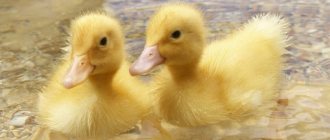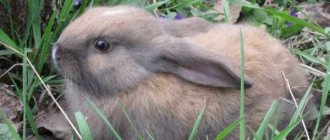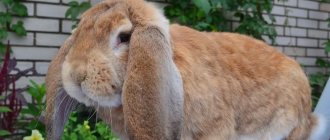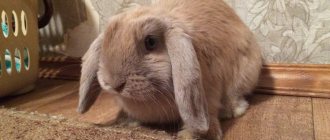Description
Mouflon is an animal that is on the verge of extinction. Small wild mouflon. The height of an adult individual is ninety centimeters, and the length of the body is 1 meter 30 cm. Males are larger than females. The first weigh about 50 kg (also due to the heavy horns), and the second - 30 kg. Interestingly, the age of a wild individual is determined by the ring-shaped growths on the horns. Females often have small horns. The animal's fur changes color depending on the time of year. In summer it becomes red in color, in winter it becomes dark. The mouflon (wild sheep) has an unusual horn structure and valuable fur, so in many countries where these amazing animals live, they are hunted. Due to the fact that the number of mouflons is rapidly declining due to human fault, this type of sheep is listed in the Red Book. Mouflon is a rare and beautiful animal that requires protection from mass extermination.
The wild oriental sheep (Asian species) differs from the European one in its massive structure. These artiodactyls have a beard on their muzzle. Body length is 1 m 50 cm, height - 95 cm, males weigh up to 80 kg, females - 45 kg. The male has powerful horns, strongly curled back, and the sternum is white. Mouflon is also called “the last sheep of Europe”, because there are few individuals left there. This animal belongs to the bovid family. The legs of mouflons are long and thin, the head is raised up, hook-nosed and proportional.
Appearance
Although the appearance of mouflons can vary depending on the type of animal, general characteristics include:
- compact body with a concave back;
- deep chest;
- straight muzzle profile;
- small and mobile ears;
- neck of moderate length;
- long limbs;
- hoof height 0.035 m - on the front legs and up to 0.04 m - on the hind legs;
- height at the withers is 90-95 cm for males and about 70 for females;
- body length – about 130-150 cm;
- the female’s weight is from 30 to 45 kg, the male’s is from 50 to 80 kg (large and heavy horns add weight to him).
The tail of mouflons is quite short - up to 10 cm. The wool is hard with a soft, compacted undercoat. The color of the fur of artiodactyls changes throughout the year: in summer it is red, and in winter it darkens. At the same time, a black stripe is clearly visible on the back of mouflons, running from the neck to the tail. The belly, nose and hooves are usually light in color.
Mouflons have well-defined sexual demorphism. In addition to their larger size, males are distinguished by the presence of large, most often spirally twisted horns, the ends of which face forward and straight, parallel to the sides of the head. The length of the horn can reach 80 cm, and the thickness at the base is 25 cm. The horns of mouflons grow throughout their lives. Every year, rings form on them, by which the age of an individual can be accurately determined.
As for the females, some of them also have horns, but they are very small. Other individuals are completely polled (hornless).
Types of mouflons
There are different types of mouflons, depending on their habitat.
- European mouflon - lives in Europe and looks as described above.
- Transcaucasian mouflon - this species is slightly larger than the European one, but in appearance it is almost no different.
- Crimean mouflons are a variety of European mouflons that were brought to the territory of Crimea more than a hundred years ago and managed to take root here. Asian mouflon or arcal - this species is no different from the European one, except for a different habitat and larger size.
- Ustyurt mouflon is a variety of Asian mouflon that lives in the steppes of Kazakhstan. Armenian mouflon differs from typical representatives by the presence of dense vegetation on the face.
- Corsican mouflon is a variety of European mouflon native to the island of Corsica. As you can see, all types of mouflons have approximately the same anatomical structure, but due to their different habitats they have different names.
Range, habitat
Mouflon is found from the Transcaucasus and southern regions of Tajikistan/Turkmenistan all the way to the Mediterranean Sea and northwestern India. The European mouflon lives on the islands of Sardinia and Corsica, as well as the south of continental Europe, where it was successfully introduced.
In the fall of 2021, mouflon was discovered in western Kazakhstan (Ustyurt plateau). Transcaucasian mouflon grazes in the mountainous areas of Azerbaijan and Armenia (including the Armenian Highlands), reaching the Zagros mountain system in Iran, Iraq and Turkey.
In addition, the species was introduced into US hunting grounds. Animals were brought to North and South America to be hunted.
There is a small colony of mouflons on the Kerguelen Islands in the southern sector of the Indian Ocean. Cyprus is home to an endemic subspecies – the Cypriot mouflon. Habitat: wooded mountain slopes. Rams (as opposed to goats) are not particularly fond of rocky mountains, preferring calm, open terrain with rounded peaks, plateaus and gentle slopes.
For a peaceful existence, mouflons need not only good pasture with a wide view, but also the proximity of a watering hole. Seasonal migrations are unusual for representatives of the species and occur very rarely, but vertical movements of populations have been noted.
In the warm season, sheep go higher into the mountains, where there is a lot of lush green vegetation and cooler air. In winter, mouflons descend to lower altitudes, where it is warmer. In dry years, the herd usually wanders in search of food and moisture.
Return to content
Where does it live?
If you look at the photo, mouflon looks vaguely like a ram. It lives in mountainous areas. There are two varieties of this breed, which differ from each other in their distribution areas: wild Asian and European. The latter species lives mainly on the mountainous coast of the Mediterranean Sea (Corsica, Cyprus, Sardinia). The European lives and breeds in Iraq and Armenia. Artiodactyls are also found on the island of Crimea. There it lives mainly in nature reserves and has adapted to the local climate as much as possible. In European countries it lives in natural conditions, but there are not many individuals left. The Asian mouflon, unlike the European one, has a massive body structure, the horns are more curled back. This artiodactyl lives in South Asia: Tajikistan, Turkey, Turkmenistan, Uzbekistan, Kazakhstan.
Mouflons were brought to Crimea at the beginning of the 20th century. Weather conditions and climate contributed to their acclimatization, so they successfully took root on the peninsula. The artiodactyls began to reproduce, but after some time poachers began to hunt them. Due to the destruction of wild sheep, only eight individuals remain in Crimea. To preserve the population, in 1923 they decided to open a reserve. There the animals are under constant protection, this has helped preserve and increase the number of artiodactyls.
Now there are more than thirty sheep in the reserve. The territory has all the conditions for a comfortable life for mouflons, because they prefer gentle mountain slopes, open spaces, and mountain-steppe vegetation. These artiodactyls try to avoid very narrow gorges, steep slopes, and high rocks. European mouflon mainly lives in Spain and southern France. Loves open spaces, small mountain slopes. The European individual has a modest size, but they can jump two to three meters in height. The peculiarity of the artiodactyl is that it can live for a long time without water.
Mouflon
Mouflon (lat. Ovis musimon or Ovis ammon musimon) is considered the smallest of the mountain sheep. However, it is he who holds the honor of being the progenitor of all breeds of domestic sheep. It is found in Armenia, northern Iraq, the Balkans and Crimea, where it was introduced in 1913. In addition, there is a small population in Corsica, Cyprus and Sardinia, but scientists cannot yet give an exact answer - whether these are wild mouflons or feral descendants of domestic sheep.
flickr/Tambako the Jaguar
The first attempts to domesticate this artiodactyl animal were made 10 thousand years ago. People knew what they were fighting for - the wool of a domestic sheep provides good warmth in bad weather, and the meat can feed more than one family. Mouflon came to Europe about 8 thousand years ago. It is assumed that he arrived from the Armenian Highlands.
flickr/pamboss
Wild mouflons love mountainous landscapes, although they move along rocks much more slowly and more carefully than goats. They can be found at altitudes of up to 4 thousand meters, although sometimes they descend much lower in search of food. They graze on open slopes, and in summer females and lambs live separately from males.
flickr/Steve Tracy Photography
“Female” herds usually number about a hundred individuals. Males live separately, joining the “ladies” only during the rutting period. At this time, serious fights take place between suitors for the right to be considered the strongest in the herd. After all the clarification of the relationship between the males, strict hierarchical connections arise. Naturally, the higher the mouflon’s “social position,” the more females will give him their preference.
flickr/rob_janne
Lambs are born in April-May. Usually one female has one or two cubs, although very rarely there may be three or even four. The babies stay first close to their mother and then in her herd for several years, despite the fact that she gives birth to new babies.
flickr/dellafels
Mouflons feed on grasses, shoots and leaves of bushes. They regularly go to watering holes, and can even drink very salty water. Starting in the spring, they diligently gain weight, and in the fall and winter they lose a lot of weight. On average, males weigh 50 kg, females - 35 kg. The body length of mouflons is 1.3 m, height is about 90 cm.
flickr/Tambako the Jaguar
Male mouflons have large, triangular, spirally twisted horns that form only one circle. Their surface is dotted with numerous wrinkles. Females have small, flattened horns that are only slightly curved. Often there are none at all. Mouflons belong to the bovid family, which means that the bony core of their horn is protected by a hollow sheath.
flickr/I'mDKB
The color of adult animals is reddish-brown with white spots on the sides. A dark stripe runs along the ridge. Moreover, in winter the fur is much darker than in summer. Young mouflons are covered with soft grayish-brown hair.
flickr/Tambako the Jaguar
Wild mouflons are preyed upon by wolves and leopards, and lambs by smaller predators such as foxes. This animal is not of great industrial interest to humans - hunters hunt it as a sporting trophy, eat the meat and use the skin for their own needs.
flickr/neurodoc2010
Unlike mountain goats, the mouflon, when escaping from enemies, relies only on its fast legs, which allow it to easily escape in open areas. However, once in a rocky gorge or on the edge of an abyss, he finds himself absolutely helpless.
Biology and lifestyle of mouflons
In Corsica and Sardinia, mouflons inhabit the elevated parts of the islands. However, even here they are not a typical mountain animal, but rather a mountain forest animal. Under normal conditions they do not climb mountains above 2000 m; very steep slopes and rocky places are avoided. But the presence of forest is an indispensable condition for the existence of the European mouflon. Mouflons spend the summer in a strip of light chestnut and oak forests, as well as in pine forests and clearings of deciduous plantings, where the animals find not only food, but also shade and protection during the daytime. The alpine meadows located next to the forest are open for grazing only at night.
By way of life, the mouflon is a nocturnal animal. He spends most of the day hidden in the forest. Only before sunset does it go out to the habitat, which is often located quite far from its daytime hiding places. Mouflons apparently do not have permanent transit routes. They graze all night and return to the forest before sunrise. In winter, they choose warm sunny valleys and slopes in the sun for rest and grazing. And in summer, during hot daytime hours, they look for coolness in the shade of bushes and trees.
Lifestyle
Mouflon is a wild, freedom-loving animal, so it prefers to migrate rather than settle strictly in one area. Its main route is watering holes and pastures. Mouflons are predominantly nocturnal, resting during the day in forests or wide mountain gorges. Females with cubs live in a herd of up to one hundred individuals. Males prefer solitude and can be found in the herd only during mating periods. These artiodactyls have a strict hierarchy. Young males under three years of age are not allowed to mate by mature individuals. The enemies of mouflon include wild predators: lynx, steppe wolf and wolverine.
Top 3: the most interesting facts about wild sheep
- These animals do not need water, as they can get by with even very salty liquids. The animal's body copes well with processing salt. Therefore, wild arcals choose habitats with a small number of bodies of water, as they are uncomfortable for predators.
- Mouflons are extremely ancient creatures. Sketches depicting the ancestors of Ovis were found in the Sahara Desert. They date back to 3000 BC. These ancestors of rams and sheep live on the islands of Sardinia and Corsica. Considering how far away the desert is, one can only guess at the time of their appearance.
- Female mouflons live in a herd of up to 100 individuals, such a group consists of lambs and their mothers. The kids are raised by all members of the community, and there is no subordination here. But in a group of males there is an arcal-alpha and everyone obeys him. At the bottom of the hierarchical ladder there are young animals, old ones, wounded ones and those who have lost their horns. It happens that one ram leaves the herd and is alone until the mating season.
Reproduction
The mating season runs from October to December. Herds of males and females are found between summer and winter pastures. The rams fight among themselves and look after the sheep by nuzzling them. The gentleman fiercely protects his chosen one from annoying relatives. After the end of courtship, pairs are formed, which break up at the end of the mating season.
Pregnancy lasts about 150 days. During childbirth, the female separates from her flock and gives birth to one lamb in a secluded place. Twins are very rare. Childbirth goes quickly. The newborn is covered with soft short fur. After a few minutes, the baby is born, stands on its feet and reaches for the udder, and a day later runs briskly after its mother.
At 3 weeks of age, the lamb begins to gradually switch to plant foods, but continues to be fed with mother’s milk until 5 months. Until he is a year old, he is under the protection of his mother.
Horns appear in the second month of life and gradually increase in size. Antlers grow especially actively in early spring, and from November to December their growth stops.
One-year-old males leave the maternal herd and go to the herd of adult males. Females can either remain in their native herd or join another one. They reach sexual maturity at 1.5-2 years, and males at 2.5-3 years.
Reproduction and lifespan
During the rutting season, males meet with females on the plains. At the same time, rams hold tournaments for the opportunity to mate. Such fights represent a clash of two males with horns. Sometimes weak males receive severe injuries and even die.
The rut can take place at different times. This may happen in March or December. Females form small herds, which include 10-15 individuals. 4-6 males come to them. At first they diverge by 20 meters, and then collide at high speed.
Sexual maturity of females occurs at 1.5 years, and for males at 3-4. Pregnancy lasts 5 months. After which 1-2 lambs are born. Within the first 2 hours they are on their feet. The cubs feed on milk for 4 weeks. They can then eat soft plants. At 3 years old, males leave the herd of females and look for their place in the hierarchy. Under natural conditions, the average lifespan of rams is 8 years, in captivity it increases to 10-15 years.
Peculiarities
If you know the lifestyle of this wild sheep, then you can start acclimatizing it and breeding it yourself. Mouflons are successfully crossed with ordinary sheep. This selection makes it possible to develop a new stable breed that produces tasty meat. For example, Academician M. F. Ivanov bred mountain merino with the help of mouflon. This is a new breed of sheep that can graze on mountain pastures for a whole year. To improve the quality of domestic sheep, mouflons are used for crossing and further reproduction. Sometimes a “mouflon” is called a stupid person who does not have his own opinion. In a certain context, this word sounds most offensive. Do not use it in speech when addressing someone (even as a joke) if you are afraid of offending the person.
Mouflon hunting
The hunt for mouflon has been going on for a long time. Only the European subspecies is of commercial importance, producing tasty meat and high-quality leather. Asian meat is also sometimes eaten, but it is not of high quality. The Asian mountain sheep has mainly “entertainment” value - it is hunted for sport. It is difficult to hunt these animals because they live in inaccessible places.
Mouflon hunting
When in danger, the mountain sheep quickly flees, heading to a wide open area where it can run wherever it pleases. So mouflon hunting is not for the faint of heart. The horns of this animal are valuable; it is a real honor to obtain them. Possession of such horns is the pride of a good hunter. But it’s not only hunting that attracts mouflon lovers. Since this ram is the closest relative of the familiar sheep, selection work has been underway for a long time to develop new breeds.
Thus, Academician M.F. Ivanov, using mouflon, obtained a new breed of sheep. It is capable of grazing on high mountain pastures throughout the year. In the Ustyurt Nature Reserve of Kazakhstan and in a number of other places, hunting mouflons is prohibited.
Interesting Facts
Mouflons are unique animals, so there are a huge number of interesting and unusual facts about them. Unfortunately, among them there are also happy and sad ones.
- Mouflon horns are of great value all over the world, so poachers have recently destroyed about thirty percent of the total animal population. And all this for the sake of horns, which are used as trophies. Also, the skin and meat of this animal are no less valuable.
- Mouflons are listed in the World Red Book and are protected by nature reserves and wildlife sanctuaries.
- Female mouflons are capable of reproduction at the age of one and a half to two years and bear offspring for no more than five months. This period is a record for all representatives of the sheep genus and allows mouflon to restore the number of individuals at a fairly fast pace.
- Several decades ago, scientists believed that the best way to preserve the mouflon population was cloning. So, they conducted an experiment, as a result of which an artificially conceived and raised lamb was born, which lived for about seven months. This method of preserving mouflons and increasing their numbers causes a large number of scientific and ethical disputes among people of different generations.
- Mouflons are the only sheep that do not shed their horns.
- In Cyprus, images of mouflons are minted on coins.
- Sometimes a person who is capable of irritating the people around him with his behavior is called a mouflon. However, this nickname is absolutely not associated with these representatives of the ram family.




